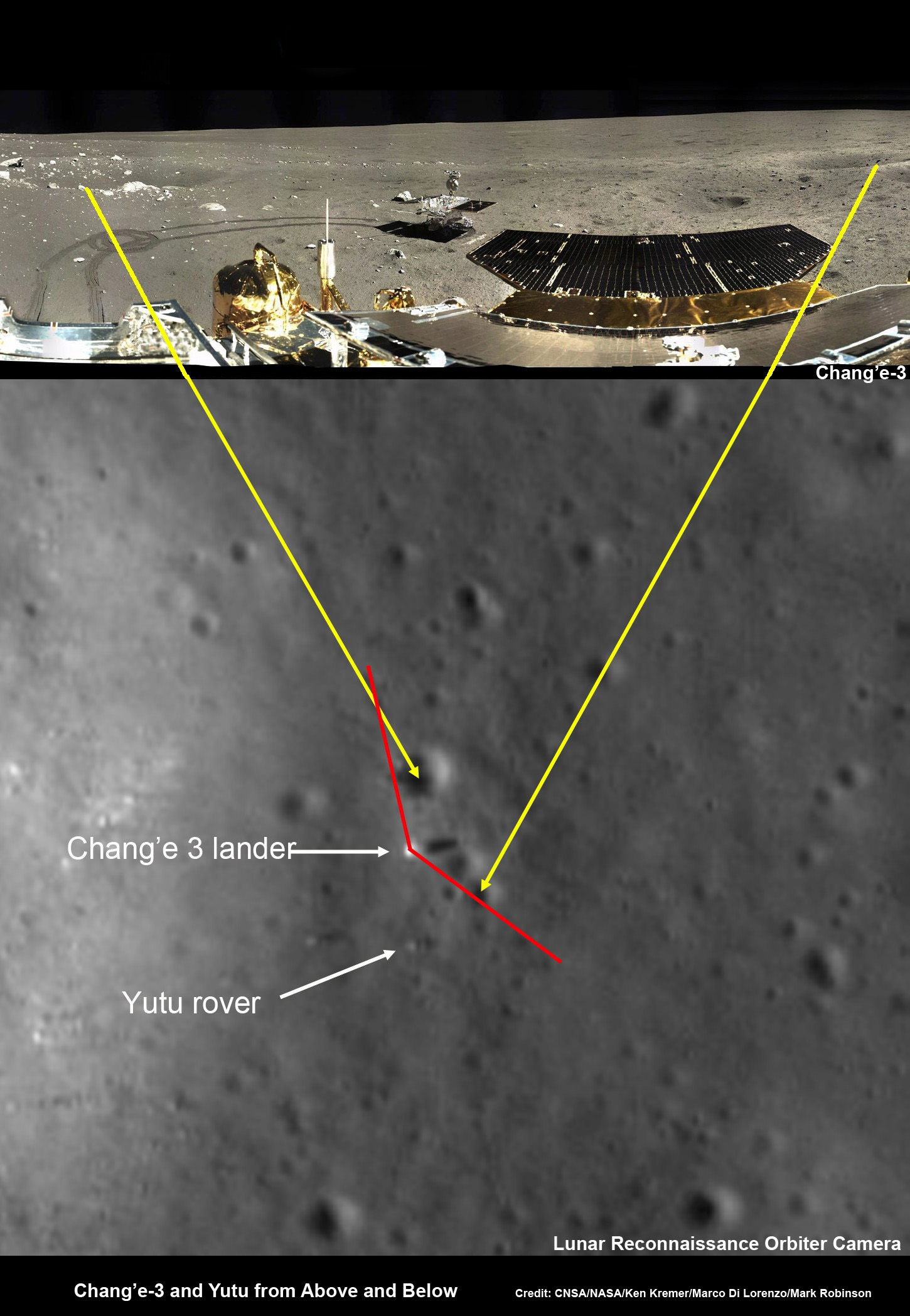China's 'Jade Rabbit' Moon Rover Stars in Stunning Lunar Panorama (Photos)

China's first moon rover and lander appear in spectacular detail in an amazing new panoramic image of the lunar surface stitched together from photos from the Chang'e 3 mission released via the country's state-run news outlets.
The new image shows China's Yutu moon rover (the name means "Jade Rabbit") passing a crater (toward the right in), as well as a final orientation that gives the viewer a good look at the Jade Rabbit's tracks (far right) as it cruises away from the lander. The image is five-position, composite time-lapse that offer a 360-degree view of the landing site around the Chang'e 3 lander and its Yutu rover.
Photographer and writer Ken Kremer and his colleagues put together this new panoramic image by using individual images from the Chang'e 3 lander, as well as its Yutu rover, to show how the rover moves. [See more photos from China's Chang'e 3 moon mission]
"I found a few new images of Yutu to superimpose onto our original panorama," Kremer wrote Space.com in an email. The "original" panoramic image Kremer refers to can be seen here.
The team matched these rover positions to precisely match with the lunar terrain at each exact location. The Kremer and his partners adjusted the rover size and color balance to give a realistic view of what it looks like to scale as it drives from the lander.
China's Chang'e 3 mission landed on the moon on Dec. 14, 2013. The mission is China's first lunar landing mission and follows two earlier moon-orbiting missions using the Chang'e 1 and 2 spacecraft. The missions are named after the moon goddess Chang'e 3 in Chinese mythology. The Yutu rover is named for the rabbit pet of the Chang'e goddess.
To see more amazing night sky or space photos submitted by SPACE.com readers, visit our astrophotography archive.
Breaking space news, the latest updates on rocket launches, skywatching events and more!
Editor's note: If you have an amazing night sky photo or video you'd like to share for a possible story or image gallery, please contact managing editor Tariq Malik at spacephotos@space.com.
Follow SPACE.com on Twitter @Spacedotcom. We're also on Facebook & Google+. Original story on Space.com.
Nina Sen is a freelance writer and producer who covered night sky photography and astronomy for Space.com. She began writing and producing content for Space.com in 2011 with a focus on story and image production, as well as amazing space photos captured by NASA telescopes and other missions. Her work also includes coverage of amazing images by astrophotographers that showcase the night sky's beauty.


